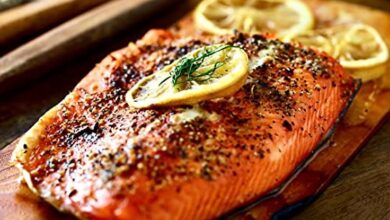Red and White Pickled Ginger from Sushi Modoki: A Culinary Delight
Pickled ginger, known as gari in Japanese cuisine, is a staple condiment served alongside sushi. Its vibrant color either pale pink or deep red and refreshing, tangy flavor make it a perfect palate cleanser. While traditional sushi uses seafood, Sushi Modoki offers a unique plant-based twist, and its signature red and white pickled ginger adds an extra layer of authenticity and flavor.
In this article, we’ll explore:
- The history and significance of pickled ginger in Japanese cuisine
- The difference between red and white pickled ginger
- A step-by-step guide to making homemade pickled ginger like Sushi Modoki
- Health benefits of ginger and its role in digestion
- How to incorporate pickled ginger into various dishes
By the end, you’ll have a comprehensive understanding of this iconic condiment and how to recreate it at home.
The History and Significance of Pickled Ginger in Japanese Cuisine
Pickled ginger has been a part of Japanese culinary tradition for centuries. Originally, it was used not only for its flavor but also for its preservative and antibacterial properties. In sushi restaurants, it serves as a palate cleanser between different types of sushi, allowing diners to fully appreciate each flavor.
Why is Ginger Paired with Sushi?
- Digestive Aid: Ginger helps break down proteins and fats, aiding digestion.
- Antimicrobial Properties: Fresh ginger has natural compounds that may help prevent foodborne illnesses.
- Flavor Contrast: The sharp, tangy taste contrasts with the umami richness of sushi.
Sushi Modoki, a vegan sushi concept, embraces traditional techniques while using plant-based ingredients. Their red and white pickled ginger adds visual appeal and enhances the dining experience.
Red vs. White Pickled Ginger: What’s the Difference?
1. White Pickled Ginger (Shiro Gari)
- Made from young ginger (shin-shoga), which is naturally tender and less fibrous.
- Typically pale yellow or off-white; sometimes dyed light pink for aesthetic appeal.
- Mild, slightly sweet flavor with a crisp texture.
2. Red Pickled Ginger (Beni Shoga)
- Made from mature ginger, giving it a stronger, spicier taste.
- Naturally turns pinkish-red when pickled due to anthocyanins (a natural pigment in ginger).
- Often used in okonomiyaki (savory pancakes) and gyudon (beef bowls).
Sushi Modoki’s version combines both styles, offering a balance of sweetness, tang, and spice.
How to Make Homemade Pickled Ginger Like Sushi Modoki
Ingredients
- 200g fresh young ginger (for white) or mature ginger (for red)
- 1 cup rice vinegar
- ¼ cup sugar
- 1 tsp salt
- 1 small beet (optional, for natural red coloring)
Step-by-Step Instructions
1. Preparing the Ginger
- Peel the ginger using a spoon (to preserve its shape).
- Slice it paper-thin using a mandoline or sharp knife.
2. Blanching (Optional for Softer Texture)
- Boil water and briefly blanch ginger slices for 30 seconds to reduce sharpness.
- Drain and pat dry.
3. Making the Pickling Liquid
- Combine rice vinegar, sugar, and salt in a saucepan. Heat until dissolved (do not boil).
- For red ginger, add a few slices of beet to the liquid for natural coloring.
4. Pickling the Ginger
- Place ginger slices in a sterilized jar.
- Pour the warm pickling liquid over them.
- Seal and refrigerate for at least 24 hours before use.
Pro Tip: For extra crispness, add a splash of ume plum vinegar or yuzu juice for a citrusy twist.
Health Benefits of Pickled Ginger
Beyond its culinary uses, pickled ginger offers several health benefits:
1. Aids Digestion
- Gingerol, a bioactive compound in ginger, stimulates digestive enzymes.
2. Anti-Inflammatory Properties
- Helps reduce muscle pain and inflammation.
3. Nausea Relief
- Effective against motion sickness and morning sickness.
4. Boosts Immunity
- Contains antioxidants that support immune function.
Creative Ways to Use Pickled Ginger Beyond Sushi
Pickled ginger isn’t just for sushi—here are some innovative ways to enjoy it:
1. Salads & Bowls
- Add to poke bowls, grain salads, or coleslaw for a zesty kick.
2. Sandwiches & Wraps
- Layer in banh mi or veggie wraps for extra crunch.
3. Cocktails & Mocktails
- Muddle into a ginger mojito or lemonade for a refreshing twist.
4. Stir-Fries & Noodles
- Toss into fried rice or ramen for acidity and depth.
Conclusion
Pickled ginger is more than just a sushi side—it’s a versatile, health-boosting condiment with a rich history. Whether you prefer the mild shiro gari or the bold beni shoga, making it at home (Sushi Modoki style) is simple and rewarding.
Experiment with different flavors, use it in diverse dishes, and enjoy its digestive benefits. For food bloggers, optimizing content around this topic can attract sushi lovers and culinary explorers alike.
Have you tried making pickled ginger at home? Share your experience in the comments!



